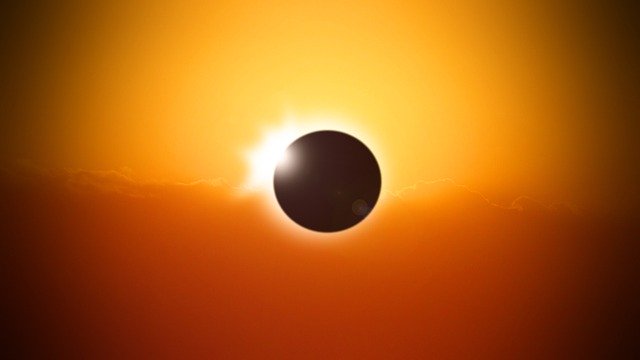Some interesting facts about solar energy
You may have heard of solar energy. But as I was talking about the different benefits of solar energy, I thought I could also write an article on various facts about solar energy.
I hope this article will help you decide whether to buy or install your solar panels in your home once you have finished reading these solar panels facts.
What is solar energy for?
Solar energy has a wide range of applications. Humans have been using solar energy for a long time. For example, people have used the sun to dry their wet clothes.
But when the 80s and 90s came, there were a lot of improvements, advancements and researches that contributed to the invention of photovoltaic cells and other similar solar energies, using devices that have changed the whole industry, revolutionized the industry, and established it as the industry from the future.
Another important and very common application is the swimming pool. Since most people swim in outdoor pools when the sun is shining outside, it can be used to warm up.
Solar energy facts
Another place where it can be used is for small devices like calculators and watches. Instead of using the normal battery, solar energy can power it.
Solar cookers are other widely used devices.
Units of energy measurements
Among other solar energy facts, it is important to note that solar energy is measured in kilowatt-hours.
The basic energy unit is the joule. However, for all practical purposes, a kilowatt-hour would be a much better option for measuring solar energy since joules are too small a unit.
To understand how much 1 kilowatt-hour costs, imagine a 100-watt device used for 10 hours. This is the amount of energy that a 1-kilowatt hour solar module would produce.
According to statistics from the US Energy Information Administration, “The annual energy consumption of an average American home was 11,040 kWh in 2008 or about 920 kWh in a month.
Which country uses the most solar energy?
If you guessed the United States, you are wrong. Britain? No, please try again. Brazil? Not yet. Germany? Bingo. Ethiopia? Germany was the right answer.
Despite its location well above the equator and its relatively small population, Germany currently uses more solar energy than any other country. This leads to gaps in the common assumptions in northern states that solar energy is not a plausible local energy solution.
Was Albert Einstein involved in solar energy?
Yes of course he was! the guy who defined the energy equation obviously knew one or two facts about solar energy? Although his work in solar energy was overshadowed by things like the theory of relativity and nuclear weapons, he had an important part in his 1921 Nobel Prize in science.
Albert Einstein was responsible for many solar experiments with the first photovoltaic panels. The only question is whether it made your hair stand up in all directions.
Can Raw Solar Energy Really Boil Water Without Electric Cells?
Yes, it can. In fact, we have known how to do it for a long time. Scientists in Africa have taught people how to sterilize water bottles by placing them on dark surfaces.
But to boil the water, you just need one of these practical little 18th century solar cookers. Alternatively, you can get a full solar oven if you wish. The solar oven was invented in 1830 by John Herschel, an astronomer.
Are Einstein’s PV modules still used today?
No, but somehow yes. Solar photovoltaic modules are still used today, but were based on silicon in the 1950s and became much more efficient than when Einstein did his research. Silicon is a product of the seemingly limitless resource that we call sand.
Only 1 ton of silicon is needed to produce enough photovoltaic cells to generate as much electrical energy as possible from 500,000 tons of coal.
Also, when you use solar photovoltaic modules based on silicon, you do not generate all kinds of air pollutants, as you naturally do when you burn fossil fuels to generate electricity.
How has inflation affected the cost of photovoltaic modules?
After all the hyperinflation in the 1970s Photovoltaic modules now cost about 200% less than in the 1970s and, in some cases, are twice as efficient at converting solar energy into electricity as in the 1970s.
So now you get about four times the electricity for your money for photovoltaic modules. Seriously, it is just about improving photovoltaic production technology.
Better energy for our environment. The sun is a source of clean energy for our environment because it contains no moving parts or gaseous emissions, does not destroy natural resources, and can power our smallest homes with large power plants. Unlike other sources of energy such as coal, petroleum, nuclear energy, and natural gas, solar energy leaves no known residue.
Solar power has many uses: radiation energy has many uses. It is used to heat water, power cars and traffic signs, generate electricity for lighting, cooking and is used for many other applications.
Demand for solar systems continues to grow, with demand now outpacing supply. With increasing demand, more and more applications are available.
Other solar energy fun facts:
There are many other interesting solar power facts and are always searching for solar panels information. For instance, a solar panel installed in the house is made up of the same elements as most conventional power sources. Items such as transformers, generators, and other similar power tools are used.
Many people want to know how much solar panel costs and how one of them can be installed on their roofs. Keep in mind that the costs you originally invested in should be recouped in the years to come or if used effectively, months later.
Solar power facts
You can imagine an area of around 1000 square feet to configure a 10-kilowatt-hour solar panel. It would be about 30 feet by 30 feet of ceiling area.
No matter where the sun is, you can use innovative mirrors to overcome this.
Unlike most other things you buy, you can get a warranty of almost 20 years for the individual solar modules and about five years for the entire installation.
Solar power facts

As you know solar energy is acquired from sunlight, this permits satellites, the Mars rovers and the International Space Station to generate their own power by deploying solar panels.
The sun’s rays reach Earth in about 8 minutes. In an hour, planet Earth receives sufficient energy to meet global energy requirements for a year if used efficiently.
More information on solar and solar energy
Thousands of years ago, Indian astronomers and, more recently, scientists like Galileo and Da Vinci studied the sun and predicted that the solar industry would flourish in the years to come, which is now true.
Several solar powered air planes and vehicles are known to travel long distances without fuel. Solar flares that occur due to sunspots have a major impact on long-distance communications on Earth, and radio waves depend on it.
Did you know that in 1978 the first solar powered calculators were invented?
After reading these facts about solar energy now learn more by reading one of my other solar energy articles for further information. If you require more information regarding solar panels try Green Match.
Recent Posts
Understanding Energy and Electricity: The Power For Progress
Energy and Electricity Energy and electricity are integral components of modern life, powering everything from homes and businesses to transportation and communication. Without them, the...
The Future of Wind Energy The future of wind energy is set to play a critical role in addressing global energy needs while combating climate change. As renewable energy sources like wind and...


